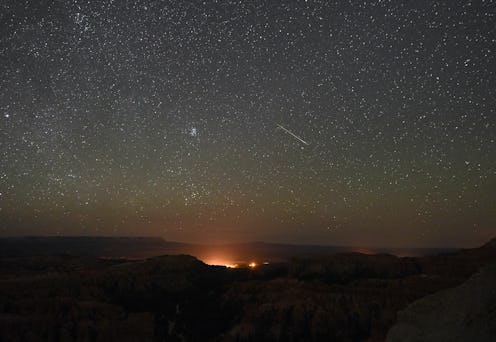Life
Here's Where You Can See Th Orionid Meteor Shower
It's a great time to be alive for outer space enthusiasts, what with the recent discovery of the Earth-like planet Proxima B, plenty of supermoons to capture before the year is up, and meteor showers aplenty. In fact, the Orionid meteor shower is happening now — and if you're still wondering where you can see the Orionid meteor shower, I have good news for you: You can see it from anywhere in the world. Catching a glimpse will be as easy as looking up!
The shower actually began on Oct. 2 and goes until Nov. 7; however, it peaks on the night of Oct. 20 and early morning of Oct. 21, which means the best view is yet to come. In fact, you might have a hard time spotting any meteors with the exceptions of these two dates. But the good news is that no matter where you are in the world — the Northern Hemisphere, the Southern Hemisphere, one of the Americas, Asia or Europe, wherever — you'll be able to see it.
The name of this shower stems from the fact that the meteors appear to radiate from the constellation Orion — so, look up in the direction of Orion, and you should have a pretty good seat to the show. The best time to catch the shower is right after midnight and right before dusk; up to 20 meteors will be visible each hour. (Some estimates say this number can ever be upwards of 25, but the moon's light will reportedly make it difficult to see the meteors this year.)
The Orionid meteor shower is created from debris coming from Halley's Comet, similar to the Eta Aquarids, which happens in May. While Halley's Comet is visible from Earth just once every 75 years, residual chunks from its tail result in these two meteor showers on the regular. What you're actually seeing is dust and rocks that the comet leaves behind, flying through our solar system. Earth passes through the tail, its gravitational pull attracting the debris. The debris enters our atmosphere, burns up, and we see meteors. The reason the Orionid meteor shower peaks around Oct. 20 to 22 every year is because this is when our Earth intersects with the orbit of Halley's Comet.
Find a dark area away from city lights, and keep your fingers crossed for clear skies. Orionid meteors tend to move very quickly — around 41 miles per second. They're also on the faint side. So make sure you're paying attention!
